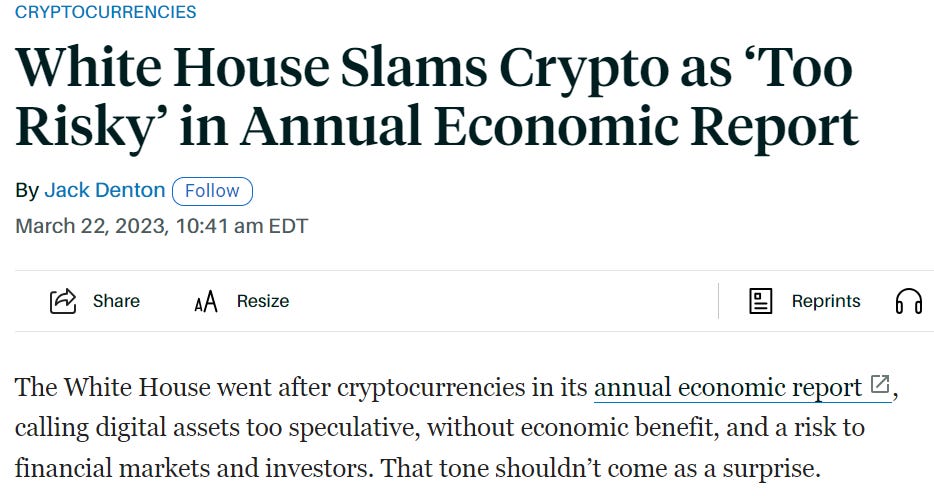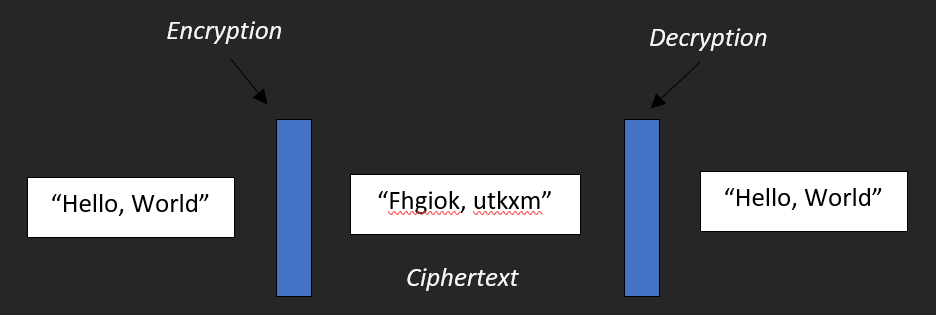🟡Crypto Investing Basics: What to Know
⚡Part 1
This will be a multi-part series covering all the ins and outs of Cryptocurrency.
✨Introduction:
I commonly hear from my fellow finance peers that they really dislike cryptocurrencies and that there is no value to the work being done in the space. “It’s all fomo and scams!”
Coupled with headlines that disapprove of crypto, it can be pretty discouraging to want to learn more about cryptocurrency.
Yes, there are many regulatory grey areas that have yet to be addressed. Yes, there are risks of bad actors. Yes, a lot of the early activity with crypto has been hype or potentially illegal activities. And most importantly, yes, cryptocurrency is a clear disruptor to the traditional centralized finance system we have in place.
Despite all these factors, in less than a year from the publication of the article above, the Bitcoin ETF was approved and launched.
I believe that conducting your own research is crucial, rather than accepting headlines at face value. The media is rife with sensationalism and bias, often painting incomplete or skewed pictures of complex issues like cryptocurrency. I know many of my Finance friends that are against Cryptocurrency also lack a thorough understanding of how the system functions. My goal is not just to provide information, but to offer a balanced and impartial view on cryptocurrency. This approach empowers you to form your own educated opinions, based on a comprehensive understanding of the topic, rather than being swayed by surface-level reports or fleeting trends.
In this article, I will:
→ Give an overview of what Cryptocurrency is
→ Explain what a blockchain is
✨Origins of Cryptocurrency
Cryptocurrency (aka Crypto) made its debut in 2009 with the introduction of Bitcoin, currently the most valuable and renowned cryptocurrency, launched by an individual or group operating under the pseudonym Satoshi Nakamoto. The true identity of Satoshi remains a mystery, and it's widely believed that we may never uncover who they really are.
What on earth is Cryptocurrency?
Before we can understand cryptocurrency, let’s break down the term to its component parts.
Crypto: short for cryptography
Currency: a form of value, AKA money
Thus, Cryptocurrency is a form of digital currency that uses cryptography as its security system. Here is an example of how cryptography works: Suppose I send a message to you but I don’t want anyone else to read it. I hide my message by encrypting it with a secret key. I tell you the key, you enter it in to decrypt the message. Now, you can access my message.
With cryptography, cryptocurrencies create the ability to have secure and anonymous transactions without the need for a central authority. This is done through decentralized networks utilizing blockchain technology, a ledger held accountable by unique entities and their network of computers.
✨ Decentralization and Blockchain
Our current centralized financial system relies on the connectivity of banks, and regulatory entities that act as intermediaries for financial transactions and services. Banks are where you keep your money, payment processing and essentially facilitates the flow cash. Regulatory entities would be like the Federal Reserve, or the European Central Bank. These entities solely exist to uphold the integrity of the financial system that they encompass. Sounds great, right?
However, as you can probably tell, there are risks of failure at certain periods of time.
With these vulnerabilities, events like the 2008 recession occured, which was caused by the losses of holding subprime mortgages by banks. As a catalyst, people began looking for alternatives to the status quo.
Hence, Decentralization!
Decentralized finance (AKA DeFi), at its core, aims to eliminate the middle party for financial transactions and services. Yes, DeFi wants to get rid of banks, exchanges and brokers. DeFi tries to replace the intermediary with blockchain technology.
What is a blockchain?
A “block” is like a box that stores a certain amount of transactions that are posted as code on a public ledger, known as a “blockchain.”
In order for blocks to be created and added onto a blockchain, miners (in the case of Bitcoin) must first validate a certain amount of transactions (size depends on the cryptocurrency and size limits). They are combing over digital signatures of transactions and making sure there is no double spend of an asset.
Once the transactions are validated, they are compiled into a new block with the appropriate metadata. The next step either involves solving a complex computational puzzle (in the case of Bitcoin) or a consensus from the network that all the transactions are valid.
The blocks are linked together through a hash of the previous block. A hash is like fingerprint verification or faceid on an iphone. These are one-way functions, meaning the output is unique and cannot be replicated.
✨ Into the Unknown
TLDR: Cryptocurrencies disrupt the financial world we know now through the use of blockchain technolqogy. Crypto comes with this fascinating potential for decentralization while also offering transparency and security. This creates an extremely interesting pivot point in how the world can operate.
At WealthWorkshop, we like to utilize multiple tools to invest smarter. However, the volatility and uncertainty of crypto’s future muddies the water. Staying curious and adaptive will equip you with the right knowledge to navigate these complex waters. We quite literally are writing the history books on the fate of Cryptocurrency. There is always room for more authors, and we have yet to fully realize the impacts that it can have.
⚡Part 2 will cover:
→ Bitcoin & Ethereum
→ Proof of Work vs Proof of Stake
Thank you for taking the time to go over an introduction to Cryptocurrency! Please consider subscribing, it’s free! Part 2 and other articles will be delievered right into your inbox!






